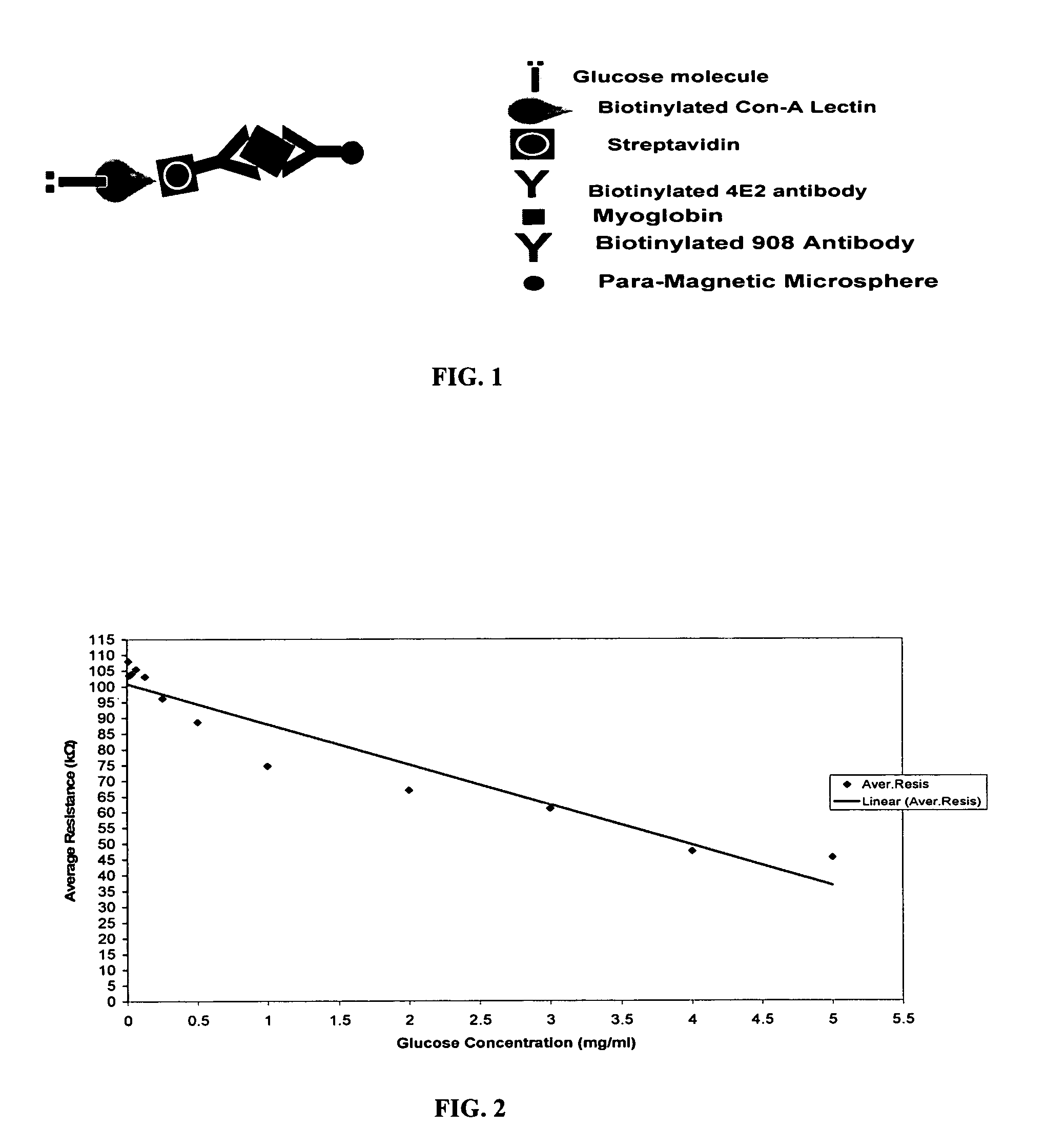Indirect detection of cardiac markers for assessing acute myocardial infarction
a cardiac marker and infarction technology, applied in the field of diagnostic immunoassays, can solve the problems of high percentage of patients who present with chest pain, insufficient sensitivity of traditional diagnostic regiments, and added injury to the individual, and malpractice actions taken against the institution
- Summary
- Abstract
- Description
- Claims
- Application Information
AI Technical Summary
Problems solved by technology
Method used
Image
Examples
example 1
Magnetic Immunoassay for Myoglobin
[0049] Materials Preparation
[0050] Magnetic microspheres (MMS) were produced using protocols that were established by Haik, et al., J. Magnetism &Magnetic Materials 194:254-61 (1999); Chatterjee et al., J. Magnetism &Magnetic Materials 257:113-18 (2003). The MMS were coated with albumin and coupled with avidin to conjugate the anti-myoglobin antibody. The synthesis of the magnetic microspheres was accomplished according to a published protocol (Chatterjee et al., J. Magnetism &Magnetic Materials 257:113-18 (2003)) in three major steps: coprecipitation of ferrous chloride and ferric chloride by sodium hydroxide, material heating and sonication, and material peptization with nitric acid. Both ferrous and ferric chloride were dissolved in a 1:2 molar ratio in distilled water. The solution then was mixed immediately with a highly concentrated sodium hydroxide, stirred continuously, heated to 90° C., and sonicated to produce ultra fine magnetic particl...
PUM
| Property | Measurement | Unit |
|---|---|---|
| concentrations | aaaaa | aaaaa |
| concentrations | aaaaa | aaaaa |
| concentrations | aaaaa | aaaaa |
Abstract
Description
Claims
Application Information
 Login to View More
Login to View More - R&D
- Intellectual Property
- Life Sciences
- Materials
- Tech Scout
- Unparalleled Data Quality
- Higher Quality Content
- 60% Fewer Hallucinations
Browse by: Latest US Patents, China's latest patents, Technical Efficacy Thesaurus, Application Domain, Technology Topic, Popular Technical Reports.
© 2025 PatSnap. All rights reserved.Legal|Privacy policy|Modern Slavery Act Transparency Statement|Sitemap|About US| Contact US: help@patsnap.com



